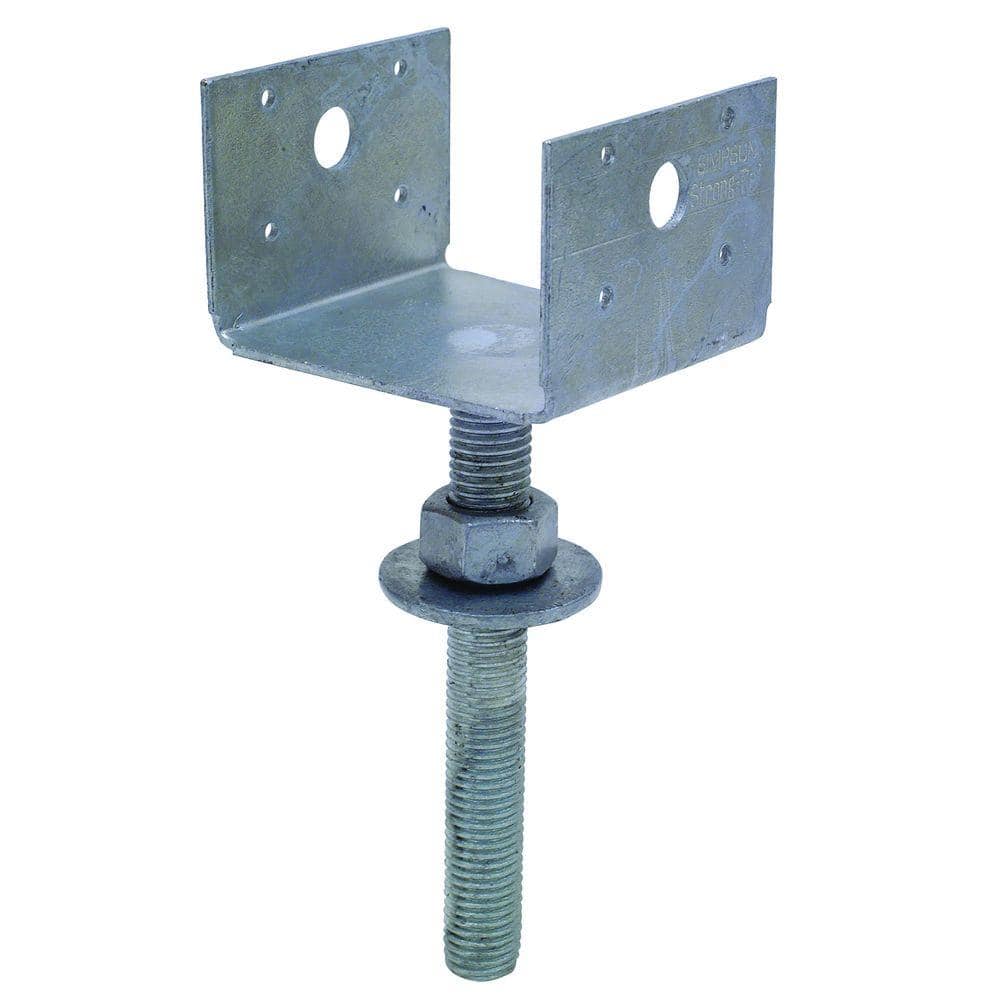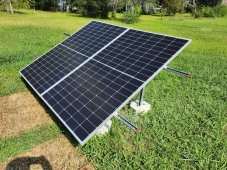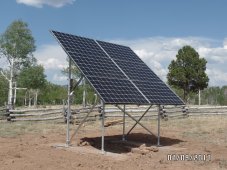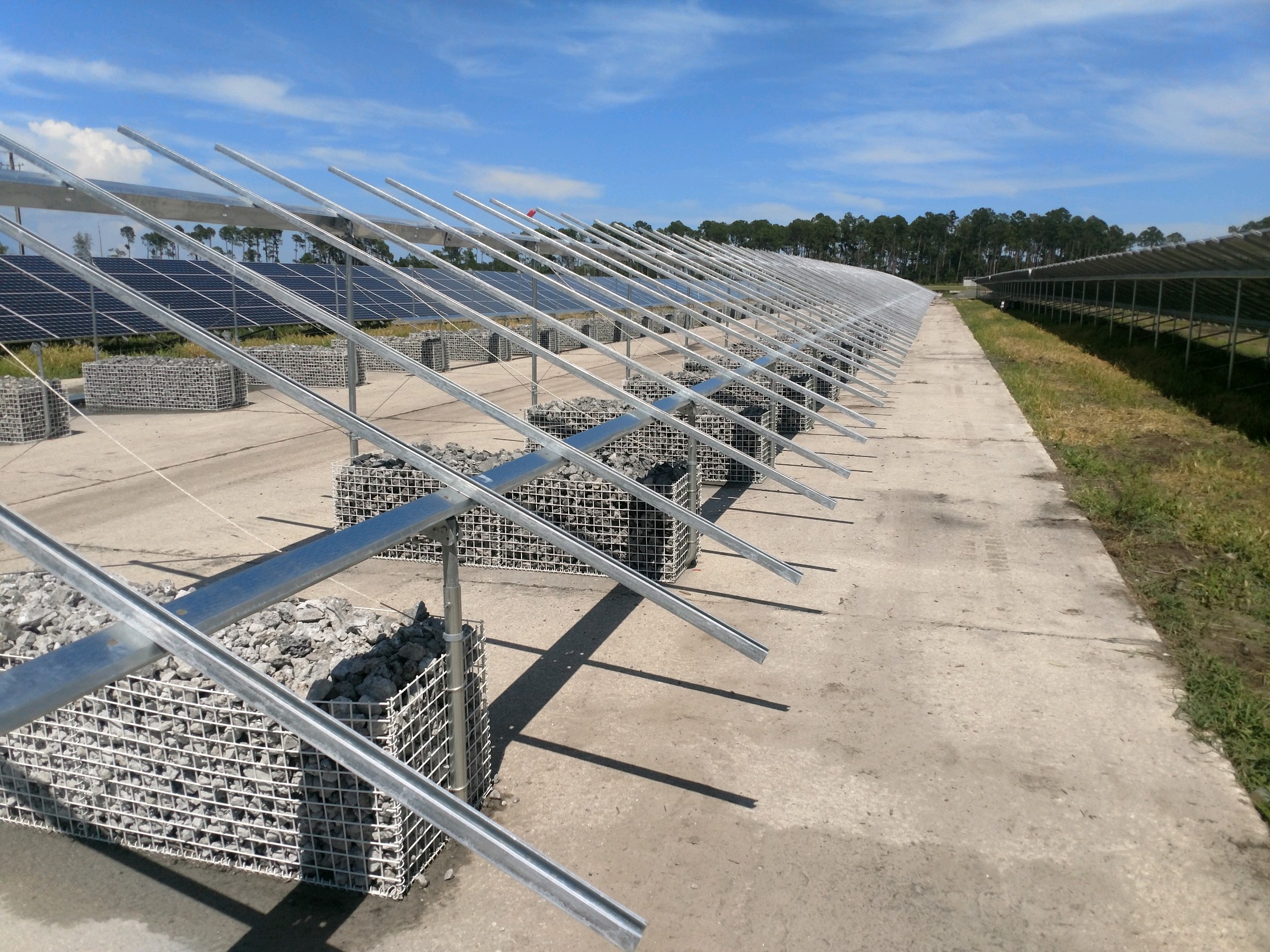We're slowly building another house about 7 miles from our current home in the middle of a blueberry barren (field) in rural Maine, where we get only about 3-3.5 hours of usable sun in the darkest days of winter, and where it snows (sometimes a LOT). This will be our retirement home, so we're trying to minimize maintenance tasks, especially those that require a lot of physical strength or getting on a ladder. Rather than put our solar on the roof (two story house but with space for an elevator designed in), I'd like to use ground mounts, as I figure I can clear snow from a ground mount easily, without getting on a ladder. The only problem is, digging post holes is a real issue, as blueberry barrens have lots of ledge (bedrock, if you don't live in northern New England US) near the surface, and so I'm trying to figure out how to build a ground mount that can:
1) Just sit on the surface, without post holes
2) Support at least four 400-550 watt panels (so about 64 square feet). I'd need several of these to get to the 15-30Kw system we'll need, but I can connect these together as needed while keeping them physically separate if that helps the wind situation.
3) Be capable of withstanding winds up to about 60 mph, which will generally come from the back (north) side of the panels, unfortunately.
4) Have the bottom of the panels about 3-4 feet off the ground, so that there's room for big snowfalls and for the snow to come off the panels.
5) Be capable of a 60-65 degree tilt in winter, to aid in snow removal amd solar collection, but which makes the wind situation much worse.
I have access to a good supply of hemlock we can mill into lumber, which we often use instead of pressure treated wood for outdoor projects. That works great if kept away from ground contact via a small concrete pad such as a paver. I keep thinking that chaining wooden mounts to some heavy (500-750 pound) concrete blocks might work well, and I could move those around with the loader on my 40 hp tractor, but hours of YouTubing aren't showing me any great examples of this, so I figure there might be a reason for that. So... I'm coming to the collective brain trust here for ideas, please. Thanks in advance!
1) Just sit on the surface, without post holes
2) Support at least four 400-550 watt panels (so about 64 square feet). I'd need several of these to get to the 15-30Kw system we'll need, but I can connect these together as needed while keeping them physically separate if that helps the wind situation.
3) Be capable of withstanding winds up to about 60 mph, which will generally come from the back (north) side of the panels, unfortunately.
4) Have the bottom of the panels about 3-4 feet off the ground, so that there's room for big snowfalls and for the snow to come off the panels.
5) Be capable of a 60-65 degree tilt in winter, to aid in snow removal amd solar collection, but which makes the wind situation much worse.
I have access to a good supply of hemlock we can mill into lumber, which we often use instead of pressure treated wood for outdoor projects. That works great if kept away from ground contact via a small concrete pad such as a paver. I keep thinking that chaining wooden mounts to some heavy (500-750 pound) concrete blocks might work well, and I could move those around with the loader on my 40 hp tractor, but hours of YouTubing aren't showing me any great examples of this, so I figure there might be a reason for that. So... I'm coming to the collective brain trust here for ideas, please. Thanks in advance!
Last edited:







